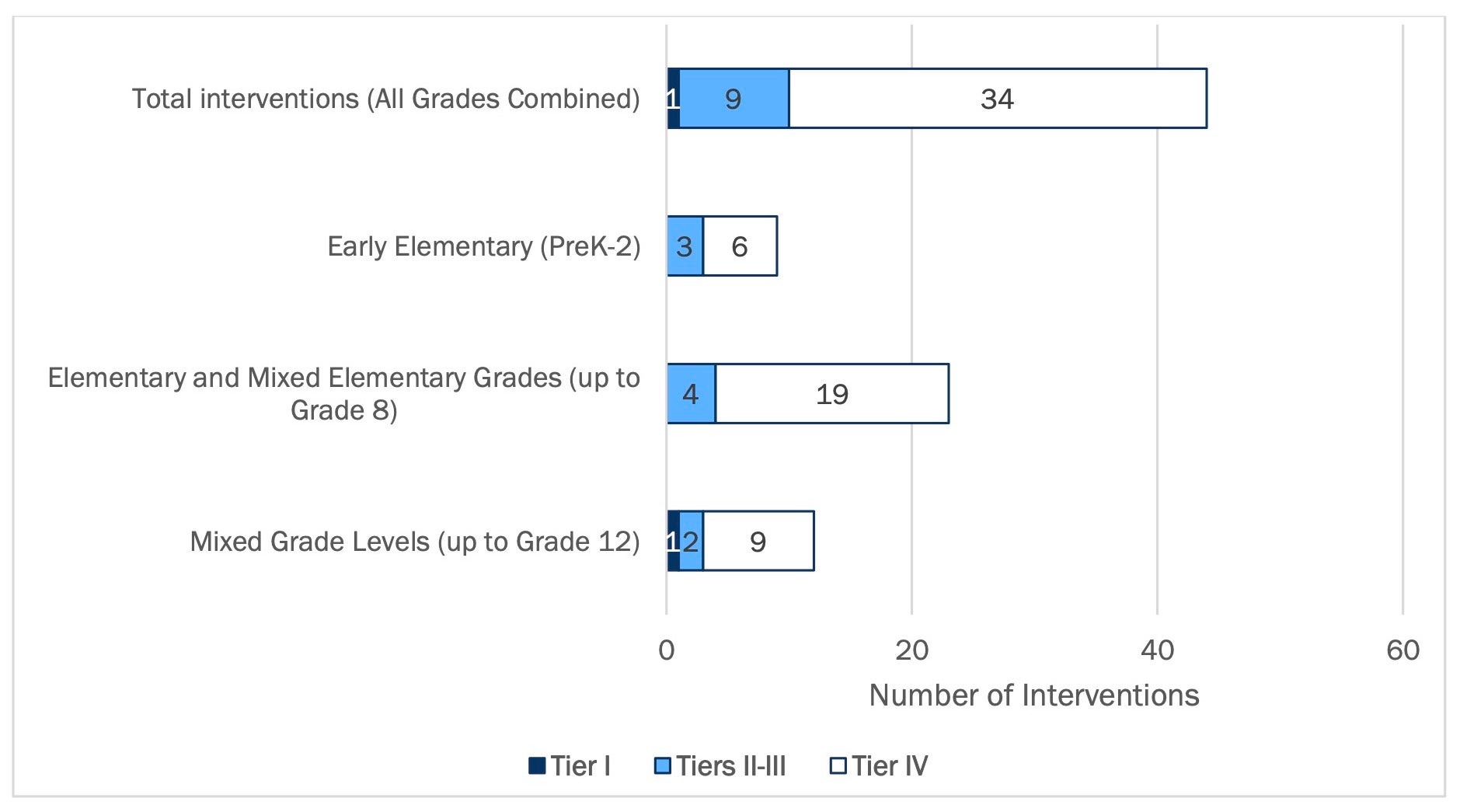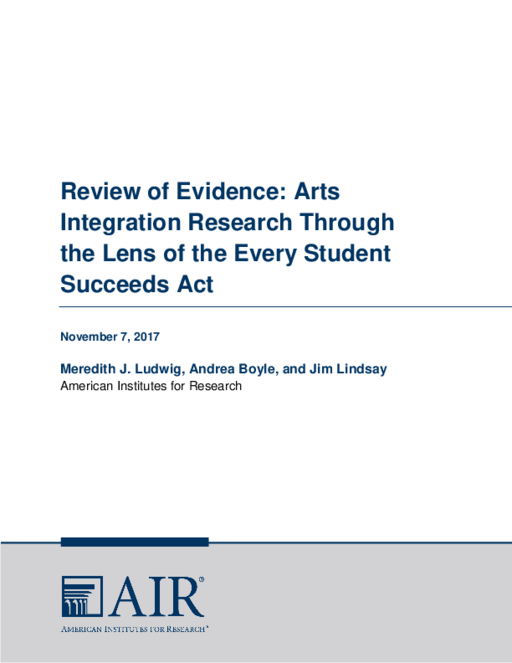Breadcrumb
- Wallace
- Reports
- Arts Integration Research Throug...
Arts Integration Research Through the Lens of the Every Student Succeeds Act

- Author(s)
- Meredith J. Ludwig, Andrea Boyle, and Jim Lindsay
- Publisher(s)
- American Institutes for Research
Summary
How we did this
Researchers conducted a comprehensive search of educational databases and clearinghouses and found more than 1,600 reports on the implementation and outcomes of arts integration interventions since 2000. After further screening to identify studies with Pre-K through Grade 12 outcomes, 135 reports were reviewed by What Works Clearinghouse-certified reviewers. Reports were then classified according to definitions of ESSA tiers of evidence. To gain a fuller picture of arts integration research findings across all well-designed studies, researchers recorded the magnitude of effects from 27 studies of interventions and meta-analyzed those effect sizes.
Arts integration connects concepts and skills from the arts and other subjects. It can include using music to teach students fractions, drama to help improve vocabulary, and dance to teach kindergarteners to read.
This evidence review explores research on arts integration activities in K-12 education. It identifies 44 studies of “interventions”—which are loosely defined as teaching strategies or programs—that qualify for funding under the federal Every Student Succeeds Act (ESSA) of 2015. It also offers recommendations for policymakers, practitioners and researchers on program implementation and research.
ESSA is the federal law that governs United States K-12 education policy. The law considers arts and music to be essential components of a well-rounded education. ESSA includes 12 new funding streams that could support arts integration. Successful applicants must cite evidence showing their proposals can improve student achievement.
Of the 44 evidence-based studies identified by researchers, ten studies met Tier I-III evidence standards for strong, moderate or promising evidence. Thirty-four met the Tier IV standard for having a research-based rationale. Several common activities under arts integration can also qualify for ESSA funding. These include teacher professional development, support for English learners, the purchase of instructional materials, and broader school-improvement efforts.
On average, the authors find that arts integration approaches produce modest but statistically significant improvements in student achievement, moving the average student from the 50th to 54th percentile. This increase puts the average effect of arts integration approaches at the 30th percentile among math, reading, and science interventions in the US Department of Education What Works Clearinghouse.
Because there are no ESSA funds earmarked for arts integration, applicants should select the interventions they propose with care. They must explain how their proposed approaches relate to broader school goals. They must also explain how they relate to available arts integration research and evidence. The authors point to several aspects of arts integration that need further study. This includes achievement effects in specific subjects or among specific student groups.
Key Takeaways
- Federal ESSA legislation considers arts and music to be essential components of a well-rounded education. ESSA includes 12 new funding streams that could support arts integration
- Researchers identified 44 arts integration studies that meet ESSA evidence requirements and qualify for funding under the federal Every Student Succeeds Act of 2015
- Successful applicants must cite evidence showing their proposals can improve student achievement. Evidence must align with ESSA’s tiered evidence structure
- More rigorous research is needed to provide stronger evidence for arts integration. The majority of studies reviewed met the Tier IV standard for having a research-based rationale (the least rigorous standard). Fewer than one-quarter of studies met Tier I-III evidence standards for strong, moderate, or promising evidence
- Researchers find modest but statistically significant improvements in student achievement from arts integration.
Visualizations

Materials & Downloads
What We Don't Know
- What are the achievement effects of individual components of arts integration interventions?
- What are the achievement effects of arts integration in specific subjects or among specific student groups?
- What are the achievement effects of arts integration among schools located in different settings (e.g., rural vs. suburban areas)?


